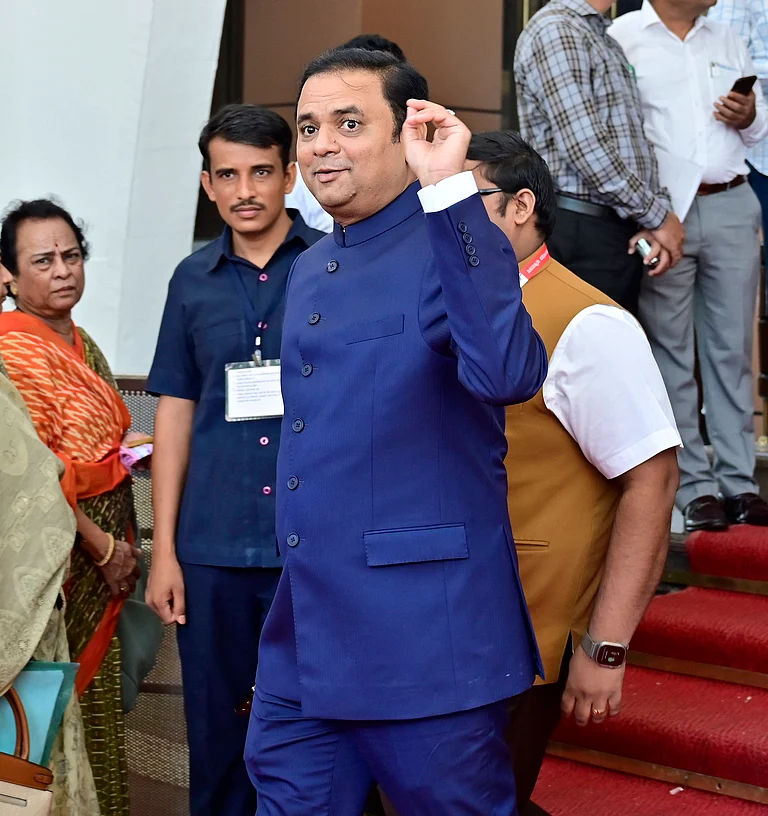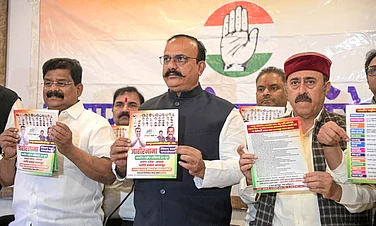The India-Canada row that erupted after Canadian Prime Minister Justin Trudeau accused India of a role in the killing of Sikh separatist Nijjar has once again brought the focus back on Punjab—a Punjabi-speaking state with a history of many ethno-religious movements, conflict politics, a decade of bloodshed, militants’ killings and also eventually a political process, development and peace, both in pre and post-Independence era.
Despite contradictions and movements like “Khalistan” – having its roots in Punjab, though its voices are more seen outside India than locally, Punjab Sikh’s patriotic spirit has never been questioned or doubted. Yet, questions continue to be raised as to who is fanning the demand for "Khalistan" when larger issues like the agrarian crisis, unemployment, drugs, migration from villages, and alienation of a large Sikh population from the mainstream political power are dominant factors.
Thus, the current happenings overseas or sporadic anti-India protests in Canada or the UK have no bearing in Punjab and no one wants to see the nightmares of killings return to the state as many are still healing from past wounds left behind by deaths and destruction.
Professor Jagroop Singh Shekhon, a Sikh scholar and former head of the Department of Political Science at Guru Nanak Dev University, Amritsar says, “A Sikh separatist movement, in its current form or what media writes as demand for Khalistan, is not what Sikh leaders in Punjab, even the parties or various groups have been asking since 1947 – the period of India’s participation on religious lines. There is more talk about it outside India than Punjab where 36,000 to 37,000 people got killed or during a dreaded phase of militancy in the state."
Sikhs have a history of patriotism and sacrifice. The Khalistan movement in the 1980s was the result of multiple social, economic, and political factors. There was a sense of alienation among the Sikhs and a failure of the political leadership to address that prevailing sentiment. It took a decade for Punjab to return to normalcy in 1991-1992 after it witnessed bloodshed and Operation Blue Star. These are etched as bad chapters in the history of Punjab, which is in a state of hopelessness as even the current regime of Aam Aadmi Party (AAP) has belied the hopes of Punjabis.
Earlier to this, the violent secessionist struggle which Sant Jarnail Singh Bhindranwale led for so-called Khalistan, had left Punjab paralyzed eventually resulting in his death inside the Golden Temple following Operation Blue Star in 1984. Corruption and drugs have killed the spirit of Punjab and changed its rich history of social movements and stories of bravery.
But, a veteran Punjab journalist Jagtar Singh says, “Bhindrawale became only a symbol of the armed struggle for a separate sovereign state for Sikhs. He rather had used the Khalistan word very cautiously yet had planned his movement very meticulously after he broke off from the Akalis and became a cult figure creating trouble for the centre."
The movement for Khalistan had its roots in one Jagjit Singh Chouhan, a former finance minister in Punjab, who became the self-styled president of Khalistan after he lost a state assembly election in 1969 and flew to the United Kingdom, where he started the secessionist movement against India with the backing of Pakistan’s ISI.
In October 1971, he got a half–page advertisement published in the New York Times, where he claimed himself as President of Khalistan in exile. Jagtar Singh helped him to collect millions of dollars from the Sikh diaspora even though he was also invited to Nankana Sahib in Pakistan where he met President and army dictator Yahya Khan. This was also the period of Bangladesh war and his independent Khalistan movement against India suited Pakistan. A year before this in 1970, another name in the context of Khalistan was mentioned - Charan Singh Panchhi and Baksish Singh, both living in the United Kingdom.
Some intellectuals in Punjab claim that the demand for a separate Sikh state dates back to the 1940s as a counter to the Lahore Resolution asking for Punjab to be a Muslim state. Master Tara Singh, who was head of Akali Dal championed this demand though it was not accepted since the population of Sikhs was much less than 53 percent Muslims. Then Punjab also included Lahore and other parts of present Pakistan.
Punjab thereafter also saw a tragic and painful period of communal violence migration during the partition period. Sikhs were targets of communal frenzy, which forced them to leave everything back, several were killed and looted, yet they migrated to India. As per Prof Shekho, the demand for a separate Sikh state in 1940, as some studies have revealed, was not aimed at the formation of an Independent Sikh state but was a ploy to delay India’s partition and counter the demand for a Muslim state, and even force a rethinking on the partition. Yet, the partition happened.
Akali Dal – initially an organisation committed to Punjab, had remained quite active and eventually became a political force to contest elections and rule Punjab. However, the party knew that without adding a religious face, it would not be able to garner majority support. The trifurcation of the state into Punjab, Haryana, and Himachal Pradesh in 1966 based on language brought Punjab into its present form yet the demands like greater autonomy from the centre, rights on water sharing, territorial issues, and over Chandigarh to be Punjab’s capital remained part of political movements.
The Akali Dal lost power to the Congress in 1972 and Giani Zail Singh became Chief Minister of Punjab. A year later, Akali Dal to re-assert its position as a well-wisher of the Sikhs, set up a committee under Surjit Singh Barnala and leaders like Gurcharan Singh Tohra to draft a document which later was called the Anandpur Sahib Resolution, and was adopted in 1973 demanding autonomy for the state of Punjab.
This galvanised the party and put the Centre’s government under pressure for autonomy. The Congress government at the Centre had viewed the Anandpur Sahib Resolution as a ‘secessionist’ document even as Akali Dal leader Harchand Singh Longowal stated that the Anandpur Sahib Resolution did not envisage an autonomous Sikh State of Khalistan.
They received support from the All India Sikh Students’ Federation and Sant Jarnail Singh Bhindranwale, a religious preacher known for his charisma and knowledge about the religious scriptures for its implementation. Around this time, Chief Minister Giani Zail Singh (who later became the president of India) approached Bhindrawale and asked him to align with the Congress, reportedly at the behest of then Prime Minister Indira Gandhi. Bhindranwale broke off from the Akali Dal and started increasingly pushing himself into a new cult as he spoke about the rights of the Sikh community and accused the Akali Dal of using the community only to enhance its political agenda.
“By 1980 after his rift with the Congress leadership and his role in violent protests and rallies, Bhindrawale had moved to the Golden Temple complex in Amritsar as he became a real force in Punjab. And, thereafter, it’s a history of what happened in 1984,” says Charanjit Singh, a social activist at Amritsar.
The desecration of the Golden Temple by Prime Minister Indira Gandhi, who had sent the army to fight Bhindrawale also became an issue for the Sikh community around the world, and they continued their demand for Khalistan even as the movement got crushed by the 1990s.
Jagtar Singh rules out the chances of people in Punjab including Sikhs supporting the so-called demand for Khalistan though some radicals outside India will continue to make some noise or hold small protests in Canada, the UK, or elsewhere.


























